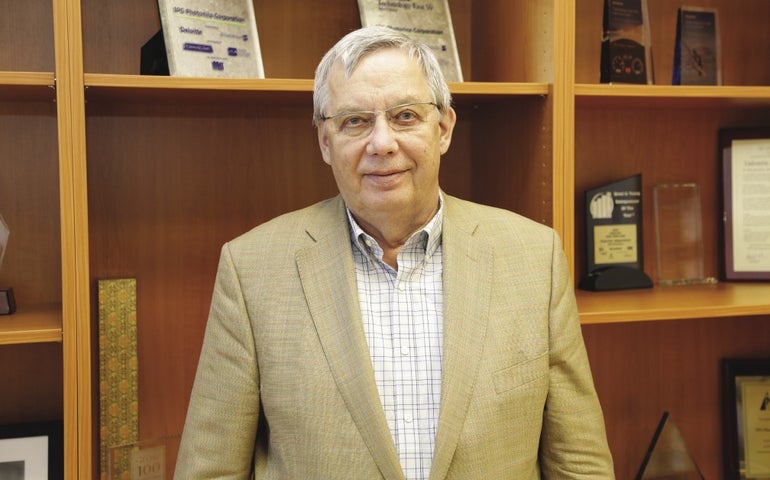The U.S. Department of the Treasury has backtracked from its designation of IPG Photonics CEO Valentin Gapontsev as a Russian oligarch after the two sides settled a lawsuit brought by the Russian-born physicist.
The two sides also agreed to stay the case for three years until Sept. 11, 2022 or until either party requests the stay be lifted.
In a letter to Gapontsev and his company, dated Sept. 11, the Treasury said if it had to create the list today, it would not include Gapontsev on a 2018 list of Russian oligarchs requested by Congress in 2017 via the Countering America’s Adversaries Through Sanctions Act (CAATSA) meant to punish powerful people connected to U.S. enemies, including Russia.
“Consequently, Dr. Gapontsev is not an oligarch in the Russian Federation for purposes of Section 241 of CAATSA,” the Treasury said. “The department’s view is based on information we did not have at the time the report was submitted to Congress.”
The letter cites Gapontsev’s U.S. citizenship and leader of an American public company.
The Treasury, however, did not say it would amend its report to Congress, which included Gapontsev, in an unclassified section of the report, on a list of dozens of other Russian political figures and billionaires, including 96 oligarchs.
“Any reference to the Russian-born Worcester resident in (the unclassified section) does not reflect any judgement by the Treasury regarding compliance with U.S. law, including those relating to sanctions against Russia or its oligarchs,” the Treasury said.
Both sides said they reached an agreement in late June and on Aug. 30 said details of the settlement would be released the week after. However, nothing was filed until Sept. 11.
Gapontsev brought the suit in December 2018, arguing that the Treasury simply copied Forbes’ list of Russian billionaires and didn’t do its due diligence to separate wealthy Russians with no connection to the Kremlin from oligarchs intertwined with the Russian government.
Further, his wealth — about $2 billion — is derived from his groundbreaking research and technological innovation in the field of fiber lasers. He and his family are the largest shareholders in the company, which is currently valued at $6.8 billion.
The Treasury in a court hearing conceded the unclassified portion of the report was taken from the 2017 Forbes list. Forbes has since moved Gapontsev to the list of American billionaires.
“Ever since the Treasury Department issued the 2018 CAATSA report to Congress, we have asserted that it was wrong in declaring Dr. Gapontsev to be a Russian oligarch. We are pleased that the Treasury has finally admitted this much in its letter,” said Angelo Lopresti, IPG Photonics’ general counsel, in a statement.
The 80-year-old has said he has no ties to Russian government and his company has not benefited from any dubious actions from the country’s leadership, specifically President Vladimir Putin, whom Gapontsev said he only met once in 2011 when he received a Russian Federation National Award for his work on laser technology.
With Gapontsev’s label, the company said some potential business partners were weary of doing business with a firm led by a Russian oligarch.
Gapontsev started the company in Russia in 1990, formed a German subsidiary in 1994 and then moved the company to Oxford in 2001.
The company had an initial public offering on NASDAQ in 2006, and revenue grew nearly every year from about $90 million in 2006 to $1.46 billion in 2018.
Gapontsev’s company and home are both in Worcester County, but IPG Photonics has a large presence in Russia via subsidiary IRE-Polus. That entity was the recipient of a $45-million investment in 2010 from a Russian government-backed technology group, but IPG repurchased those shares two years later.
Since then, the company expanded its footprint in Russia from about 100,000 square feet to more than 600,000 square feet in and around Moscow.

